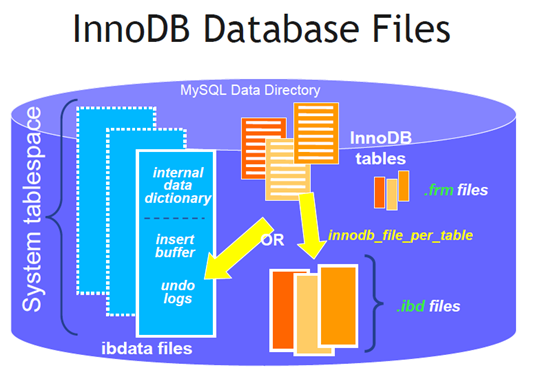10 recommended articles about optimizing databases
This article mainly introduces the tutorial of MySQL to implement batch insertion to optimize performance. The running time is given to express the comparison after performance optimization. Friends in need can refer to it. For some systems with large amounts of data, the database faces In addition to low query efficiency, the problem is that it takes a long time for data to be stored in the database. Especially for reporting systems, the time spent on data import may last for several hours or more than ten hours every day. Therefore, it makes sense to optimize database insertion performance. After some performance tests on MySQL innodb, I found some methods that can improve insert efficiency for your reference. 1. One SQL statement inserts multiple pieces of data. Commonly used insert statements such as INSERT INTO `insert_table` (`datetime`, `uid`, `content`, `type`) VALUES ('0', 'userid_0'
1. How to use INNODB? Summary of how to use INNODB

Introduction: This article mainly introduces the tutorial of MySQL to implement batch insertion to optimize performance. The running time is given in the article to indicate the comparison after performance optimization. Friends in need can refer to the following For some systems with large amounts of data, in addition to low query efficiency, the problem faced by the database is that it takes a long time to enter the data into the database. Especially for reporting systems, the time spent on data import may last for several hours or more than a dozen times a day. hours. Therefore, it is very meaningful to optimize the database insertion performance. After some performance tests on MySQL innodb, I found some things that can improve the insert efficiency...
#2. 10 recommended articles about optimizing performance

3.
Detailed introduction to optimizing performance

4.
Some operations about MySQL optimization
 ##Introduction: The design of MySQL is Through the cache pool, that is to say, part of the data is stored in the memory. When we search for a piece of data, if it is found in the cache pool, we can directly obtain it from the cache. If it is not there, Then load it into the disk
##Introduction: The design of MySQL is Through the cache pool, that is to say, part of the data is stored in the memory. When we search for a piece of data, if it is found in the cache pool, we can directly obtain it from the cache. If it is not there, Then load it into the disk
5.
Introduction to the method of enabling slow query for MySQL slow query Introduction: Turning on the slow query log allows MySQL to record queries that exceed the specified time. By locating and analyzing performance bottlenecks, the performance of the database system can be better optimized. The following article mainly introduces the relevant information about starting slow query in MySQL. Friends in need can refer to it.
Introduction: Turning on the slow query log allows MySQL to record queries that exceed the specified time. By locating and analyzing performance bottlenecks, the performance of the database system can be better optimized. The following article mainly introduces the relevant information about starting slow query in MySQL. Friends in need can refer to it.
6. 10 Tips to Optimize Database Speed

##Introduction: Big The content of most websites is stored in a database, and users access the content through requests. The database is very fast, and there are many techniques that allow you to optimize the speed of the database so that you do not waste server resources. In this article, I’ve included ten tips for optimizing database speed.
7. How does PHP solve the problem of large website traffic and high concurrency

8.
Suggestions for making the database faster

9.
10 tips to make your database faster

10.
php, nginx, apache, mysql How does PHP solve the problem of large website traffic and high concurrency" />
 #Introduction: First, confirm whether the server hardware is sufficient to support the current traffic . Ordinary P4 servers can generally support up to 100,000 independent IPs per day. If the number of visits is larger than this, you must first configure a higher-performance dedicated server to solve the problem. Otherwise, no matter how you optimize it, it is impossible to completely solve the performance problem. . Secondly, optimize database access. It is of course best to implement a completely static front-end without accessing the database at all. However, for frequently updated websites, static caching technology is another solution, which is to make the database dynamic. The data is stored in...
#Introduction: First, confirm whether the server hardware is sufficient to support the current traffic . Ordinary P4 servers can generally support up to 100,000 independent IPs per day. If the number of visits is larger than this, you must first configure a higher-performance dedicated server to solve the problem. Otherwise, no matter how you optimize it, it is impossible to completely solve the performance problem. . Secondly, optimize database access. It is of course best to implement a completely static front-end without accessing the database at all. However, for frequently updated websites, static caching technology is another solution, which is to make the database dynamic. The data is stored in...
[Related Q&A recommendations]:
php - A problem occurred when WordPress was first built
java - How do you use search engines such as lucence to optimize mysql database queries?
The above is the detailed content of 10 recommended articles about optimizing databases. For more information, please follow other related articles on the PHP Chinese website!

Hot AI Tools

Undresser.AI Undress
AI-powered app for creating realistic nude photos

AI Clothes Remover
Online AI tool for removing clothes from photos.

Undress AI Tool
Undress images for free

Clothoff.io
AI clothes remover

Video Face Swap
Swap faces in any video effortlessly with our completely free AI face swap tool!

Hot Article

Hot Tools

Notepad++7.3.1
Easy-to-use and free code editor

SublimeText3 Chinese version
Chinese version, very easy to use

Zend Studio 13.0.1
Powerful PHP integrated development environment

Dreamweaver CS6
Visual web development tools

SublimeText3 Mac version
God-level code editing software (SublimeText3)

Hot Topics
 1664
1664
 14
14
 1421
1421
 52
52
 1315
1315
 25
25
 1266
1266
 29
29
 1239
1239
 24
24
 When might a full table scan be faster than using an index in MySQL?
Apr 09, 2025 am 12:05 AM
When might a full table scan be faster than using an index in MySQL?
Apr 09, 2025 am 12:05 AM
Full table scanning may be faster in MySQL than using indexes. Specific cases include: 1) the data volume is small; 2) when the query returns a large amount of data; 3) when the index column is not highly selective; 4) when the complex query. By analyzing query plans, optimizing indexes, avoiding over-index and regularly maintaining tables, you can make the best choices in practical applications.
 MySQL: Simple Concepts for Easy Learning
Apr 10, 2025 am 09:29 AM
MySQL: Simple Concepts for Easy Learning
Apr 10, 2025 am 09:29 AM
MySQL is an open source relational database management system. 1) Create database and tables: Use the CREATEDATABASE and CREATETABLE commands. 2) Basic operations: INSERT, UPDATE, DELETE and SELECT. 3) Advanced operations: JOIN, subquery and transaction processing. 4) Debugging skills: Check syntax, data type and permissions. 5) Optimization suggestions: Use indexes, avoid SELECT* and use transactions.
 MySQL: The Ease of Data Management for Beginners
Apr 09, 2025 am 12:07 AM
MySQL: The Ease of Data Management for Beginners
Apr 09, 2025 am 12:07 AM
MySQL is suitable for beginners because it is simple to install, powerful and easy to manage data. 1. Simple installation and configuration, suitable for a variety of operating systems. 2. Support basic operations such as creating databases and tables, inserting, querying, updating and deleting data. 3. Provide advanced functions such as JOIN operations and subqueries. 4. Performance can be improved through indexing, query optimization and table partitioning. 5. Support backup, recovery and security measures to ensure data security and consistency.
 MySQL's Role: Databases in Web Applications
Apr 17, 2025 am 12:23 AM
MySQL's Role: Databases in Web Applications
Apr 17, 2025 am 12:23 AM
The main role of MySQL in web applications is to store and manage data. 1.MySQL efficiently processes user information, product catalogs, transaction records and other data. 2. Through SQL query, developers can extract information from the database to generate dynamic content. 3.MySQL works based on the client-server model to ensure acceptable query speed.
 MySQL: An Introduction to the World's Most Popular Database
Apr 12, 2025 am 12:18 AM
MySQL: An Introduction to the World's Most Popular Database
Apr 12, 2025 am 12:18 AM
MySQL is an open source relational database management system, mainly used to store and retrieve data quickly and reliably. Its working principle includes client requests, query resolution, execution of queries and return results. Examples of usage include creating tables, inserting and querying data, and advanced features such as JOIN operations. Common errors involve SQL syntax, data types, and permissions, and optimization suggestions include the use of indexes, optimized queries, and partitioning of tables.
 Explain the role of InnoDB redo logs and undo logs.
Apr 15, 2025 am 12:16 AM
Explain the role of InnoDB redo logs and undo logs.
Apr 15, 2025 am 12:16 AM
InnoDB uses redologs and undologs to ensure data consistency and reliability. 1.redologs record data page modification to ensure crash recovery and transaction persistence. 2.undologs records the original data value and supports transaction rollback and MVCC.
 MySQL's Place: Databases and Programming
Apr 13, 2025 am 12:18 AM
MySQL's Place: Databases and Programming
Apr 13, 2025 am 12:18 AM
MySQL's position in databases and programming is very important. It is an open source relational database management system that is widely used in various application scenarios. 1) MySQL provides efficient data storage, organization and retrieval functions, supporting Web, mobile and enterprise-level systems. 2) It uses a client-server architecture, supports multiple storage engines and index optimization. 3) Basic usages include creating tables and inserting data, and advanced usages involve multi-table JOINs and complex queries. 4) Frequently asked questions such as SQL syntax errors and performance issues can be debugged through the EXPLAIN command and slow query log. 5) Performance optimization methods include rational use of indexes, optimized query and use of caches. Best practices include using transactions and PreparedStatemen
 Why Use MySQL? Benefits and Advantages
Apr 12, 2025 am 12:17 AM
Why Use MySQL? Benefits and Advantages
Apr 12, 2025 am 12:17 AM
MySQL is chosen for its performance, reliability, ease of use, and community support. 1.MySQL provides efficient data storage and retrieval functions, supporting multiple data types and advanced query operations. 2. Adopt client-server architecture and multiple storage engines to support transaction and query optimization. 3. Easy to use, supports a variety of operating systems and programming languages. 4. Have strong community support and provide rich resources and solutions.




